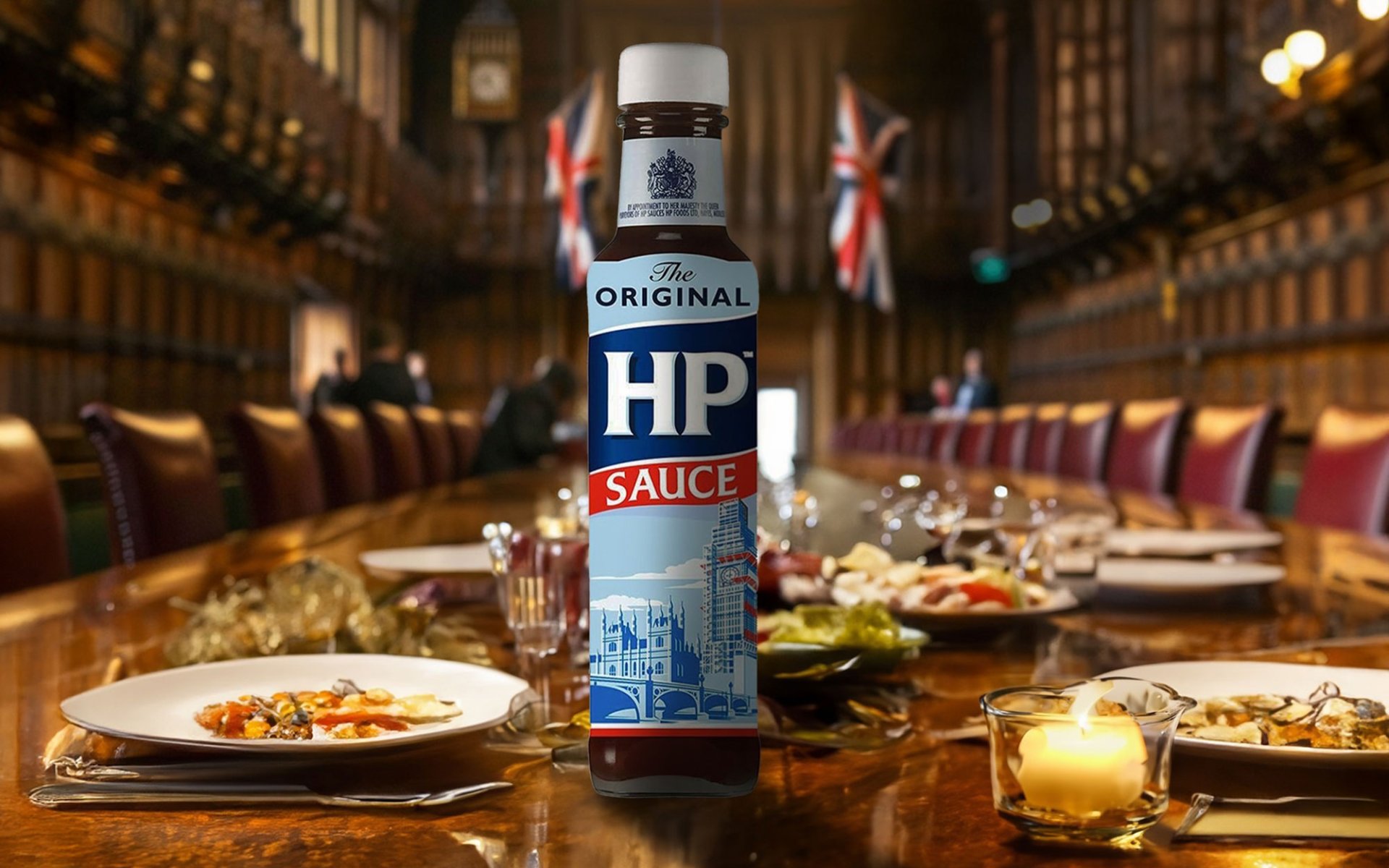HP Sauce

HP Sauce is a rich, dark brown British-style sauce made primarily from tomatoes, tamarind extract, and malt vinegar. It's commonly enjoyed with steak, sausages, French fries, sandwiches, barbecues, and hamburgers. Today, Rimping Supermarket invites you to delve into the fascinating story of this beloved British sauce that has been a kitchen staple for over a century.
The Genesis and Legendary Name: From The Banquet Sauce to HP Sauce (1884 - 1895 AD)
The story of HP Sauce began in 1884 with Frederick Gibson Garton, a grocer in Nottingham, England. Legend has it that Garton was interested in making condiments, so he concocted a sauce at his factory by blending malt vinegar, tomatoes, dates, tamarind extract, molasses, rye flour, and various spices. The result was a rich, tangy, and sweet sauce with a perfectly balanced flavor.
Once the recipe was perfected, in 1890, Garton registered his sauce's trademark as The Banquet Sauce. Soon after its launch, his sauce gained popularity throughout Nottingham. One day, Garton received news that his sauce was being served on the dining tables at the British Houses of Parliament. Consequently, in 1895, he changed the sauce's name to Gartons HP Sauce, with HP standing for the abbreviation of London's Parliament, known as the Houses of Parliament.
This name change significantly boosted his brand's attention, as he began marketing it with the slogan: Is used on the dining tables of the House of Parliament.
Change of Ownership and Iconic Logo: Parliament on the Label (1903 - 1988 AD)
However, despite his brand gaining popularity, in 1903, Garton faced financial difficulties due to debts owed to a malt vinegar company. Despite numerous appeals, his debt remained unsettled, eventually forcing him to sell his trademark and recipe to Edwin Samson Moore, the founder of Midlands Vinegar Company, a malt vinegar firm in Birmingham.
After acquiring Garton's trademark, Moore recognized the sauce's potential. He then resumed production, dropping Garton's name to simply HP Sauce and redesigning the label to include the iconic image of the Houses of Parliament.
The label featuring the Houses of Parliament further strengthened the brand, quickly making it a widely popular and staple condiment in households across England. It perfectly complemented a variety of dishes, from steaks, sausages, French fries, sandwiches, barbecues, and hamburgers.
During World War I and World War II, HP Sauce became even more deeply rooted in British culture. It was often included in soldiers' rations fighting abroad. The sauce's rich flavor significantly enhanced bland meals, and it also served as a comforting reminder of home for the troops.
After World War II, the Midlands Vinegar Company merged with Smedley's, another Birmingham-based company, forming HP Foods. This new entity continuously expanded its product line, introducing new HP Sauce variants such as HP Fruity Sauce and HP BBQ Sauce.
Changes in Ownership and Return to Homeland (1988 AD - Present)
In 1988, Groupe Danone, a French company, acquired HP Foods, marking HP Sauce's first entry into international markets. Then, in 2005, Heinz, the American giant famous for its tomato ketchup, acquired HP Foods.
Following the acquisition, Heinz controversially closed the HP Sauce factory in Birmingham, where the sauce had been produced for over 100 years, and moved production to the Netherlands. This sparked protests from the British public, who worried about changes to the recipe and quality. Nevertheless, Heinz promised consumers that they would maintain the original recipe and quality of HP Sauce.
In 2017, HP Foods was sold again to Unilever, a major consumer goods company based in London, England. This history reflects the enduring strength of HP Sauce as a popular condiment. Despite multiple ownership changes, HP Sauce remains popular today, and it has finally returned to England, its country of origin.
Currently, HP Sauce is sold in over 60 countries worldwide and remains one of the most popular condiments in the UK, becoming a cultural icon often mentioned in literature, television shows, and music.


